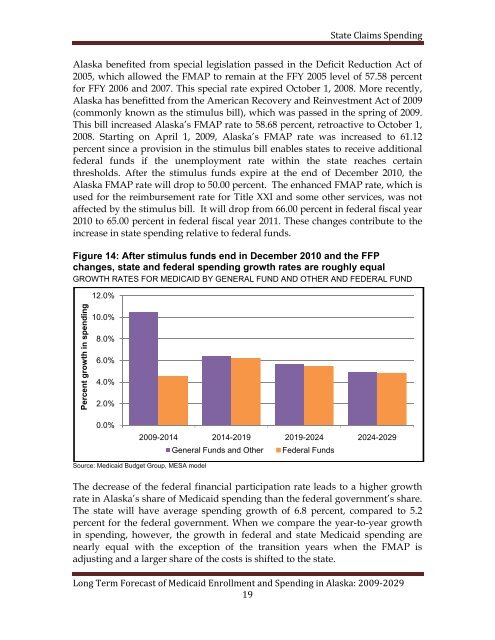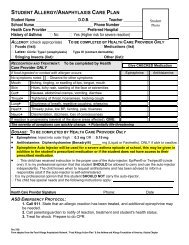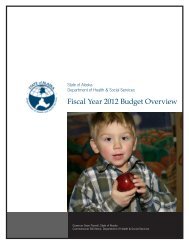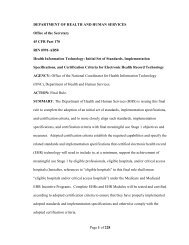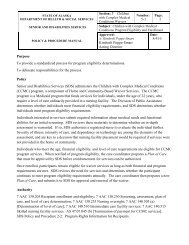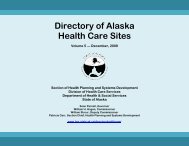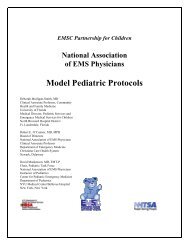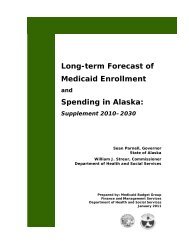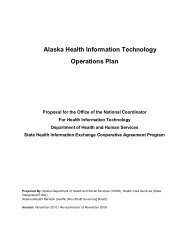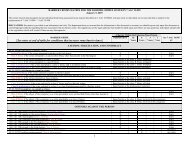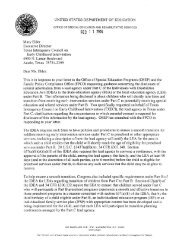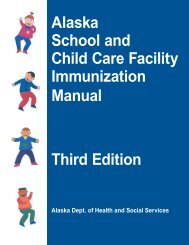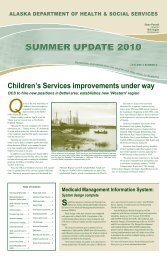Long-term Forecast of Medicaid Enrollment Spending in Alaska:
Long-term Forecast of Medicaid Enrollment Spending in Alaska:
Long-term Forecast of Medicaid Enrollment Spending in Alaska:
You also want an ePaper? Increase the reach of your titles
YUMPU automatically turns print PDFs into web optimized ePapers that Google loves.
State Claims <strong>Spend<strong>in</strong>g</strong><br />
<strong>Alaska</strong> benefited from special legislation passed <strong>in</strong> the Deficit Reduction Act <strong>of</strong><br />
2005, which allowed the FMAP to rema<strong>in</strong> at the FFY 2005 level <strong>of</strong> 57.58 percent<br />
for FFY 2006 and 2007. This special rate expired October 1, 2008. More recently,<br />
<strong>Alaska</strong> has benefitted from the American Recovery and Re<strong>in</strong>vestment Act <strong>of</strong> 2009<br />
(commonly known as the stimulus bill), which was passed <strong>in</strong> the spr<strong>in</strong>g <strong>of</strong> 2009.<br />
This bill <strong>in</strong>creased <strong>Alaska</strong>’s FMAP rate to 58.68 percent, retroactive to October 1,<br />
2008. Start<strong>in</strong>g on April 1, 2009, <strong>Alaska</strong>’s FMAP rate was <strong>in</strong>creased to 61.12<br />
percent s<strong>in</strong>ce a provision <strong>in</strong> the stimulus bill enables states to receive additional<br />
federal funds if the unemployment rate with<strong>in</strong> the state reaches certa<strong>in</strong><br />
thresholds. After the stimulus funds expire at the end <strong>of</strong> December 2010, the<br />
<strong>Alaska</strong> FMAP rate will drop to 50.00 percent. The enhanced FMAP rate, which is<br />
used for the reimbursement rate for Title XXI and some other services, was not<br />
affected by the stimulus bill. It will drop from 66.00 percent <strong>in</strong> federal fiscal year<br />
2010 to 65.00 percent <strong>in</strong> federal fiscal year 2011. These changes contribute to the<br />
<strong>in</strong>crease <strong>in</strong> state spend<strong>in</strong>g relative to federal funds.<br />
Figure 14: After stimulus funds end <strong>in</strong> December 2010 and the FFP<br />
changes, state and federal spend<strong>in</strong>g growth rates are roughly equal<br />
GROWTH RATES FOR MEDICAID BY GENERAL FUND AND OTHER AND FEDERAL FUND<br />
Percent growth <strong>in</strong> spend<strong>in</strong>g<br />
12.0%<br />
10.0%<br />
8.0%<br />
6.0%<br />
4.0%<br />
2.0%<br />
0.0%<br />
2009-2014 2014-2019 2019-2024 2024-2029<br />
Source: <strong>Medicaid</strong> Budget Group, MESA model<br />
General Funds and Other Federal Funds<br />
The decrease <strong>of</strong> the federal f<strong>in</strong>ancial participation rate leads to a higher growth<br />
rate <strong>in</strong> <strong>Alaska</strong>’s share <strong>of</strong> <strong>Medicaid</strong> spend<strong>in</strong>g than the federal government’s share.<br />
The state will have average spend<strong>in</strong>g growth <strong>of</strong> 6.8 percent, compared to 5.2<br />
percent for the federal government. When we compare the year-to-year growth<br />
<strong>in</strong> spend<strong>in</strong>g, however, the growth <strong>in</strong> federal and state <strong>Medicaid</strong> spend<strong>in</strong>g are<br />
nearly equal with the exception <strong>of</strong> the transition years when the FMAP is<br />
adjust<strong>in</strong>g and a larger share <strong>of</strong> the costs is shifted to the state.<br />
<strong>Long</strong> Term <strong>Forecast</strong> <strong>of</strong> <strong>Medicaid</strong> <strong>Enrollment</strong> and <strong>Spend<strong>in</strong>g</strong> <strong>in</strong> <strong>Alaska</strong>: 2009‐2029<br />
19


